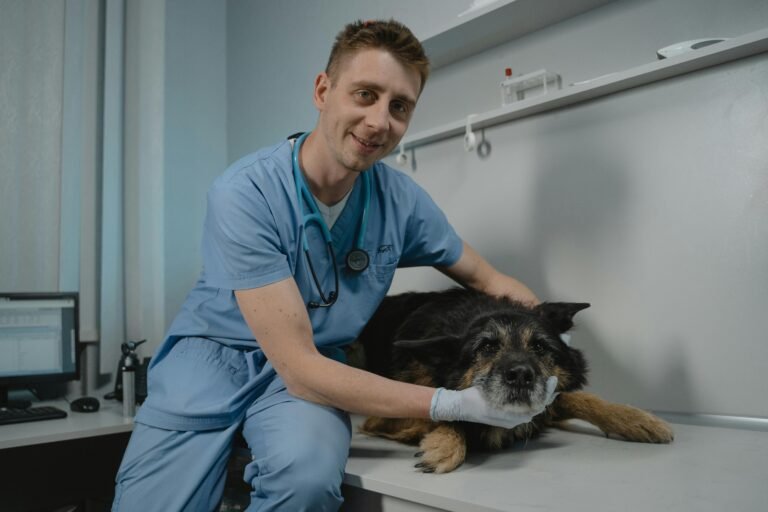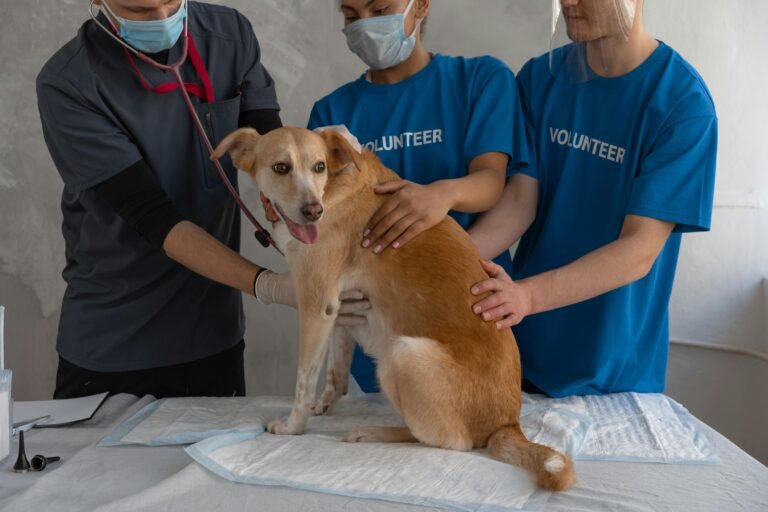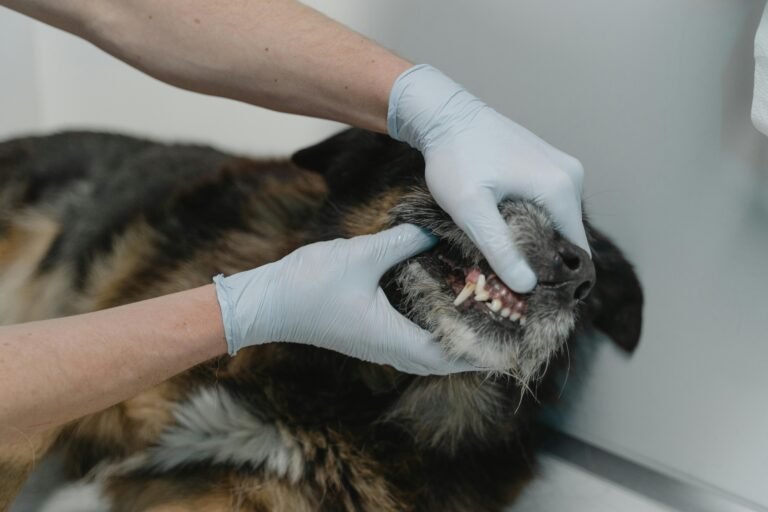Introduction
Your dog’s skin and coat are windows into their overall health. A shiny, soft coat and smooth skin often reflect proper nutrition, hydration, and wellness—while dull fur, flakes, or redness can be early warning signs of underlying issues. Because dogs can’t tell us when they’re uncomfortable, learning to recognize skin and coat red flags is essential. Catching these problems early can prevent infections, allergies, and more serious conditions down the line. In this article, we’ll explore the most common signs of trouble, their possible causes, and what to do if you notice them.
Why Skin and Coat Health Matters
Your dog’s skin is their largest organ, serving as the first line of defense against bacteria, parasites, and environmental irritants. The coat protects from temperature extremes, UV rays, and physical injuries. A healthy skin-and-coat system keeps your dog comfortable and resilient. When something goes wrong, though, it can cause discomfort and signal deeper health imbalances that deserve attention.
Common Skin and Coat Red Flags
Here are key signs that something may be wrong beneath the fur:
- Excessive Itching or Scratching: Persistent scratching, licking, or biting at specific areas may indicate allergies, fleas, or infections.
- Dry, Flaky Skin: Dandruff-like flakes often result from low humidity, poor diet, or underlying health issues like hypothyroidism.
- Hair Loss or Bald Spots: Patches of missing fur can signal allergies, parasites (like mange), or hormonal problems.
- Redness or Rash: Inflamed or irritated skin may be due to contact dermatitis, yeast infections, or allergic reactions.
- Greasy or Oily Coat: Overactive skin glands or certain infections can make the coat feel slick or smell unpleasant.
- Unusual Odor: A persistent smell, even after baths, can indicate yeast or bacterial infections.
- Scabs, Lumps, or Bumps: These may develop from insect bites, infections, or tumors and should always be checked by a vet.
- Change in Coat Texture or Color: Brittle fur or discoloration may stem from nutritional deficiencies or underlying disease.
Possible Causes
Several factors can contribute to skin and coat problems. Understanding the root cause helps guide effective treatment:
- Allergies: Environmental triggers (pollen, dust mites, mold), food sensitivities, or flea bites are leading causes of chronic itching and irritation.
- Parasites: Fleas, ticks, mites, and lice can cause intense itching and hair loss.
- Infections: Bacterial or yeast infections often develop secondary to scratching or skin damage.
- Nutritional Deficiencies: Lack of omega-3 fatty acids, zinc, or high-quality protein can dull the coat and dry the skin.
- Hormonal Imbalances: Conditions like hypothyroidism or Cushing’s disease can cause thinning hair and recurring infections.
- Environmental Factors: Extreme weather, harsh shampoos, or poor grooming habits can strip oils from the skin.
At-Home Inspection Tips
Regularly checking your dog’s skin and coat can catch problems early before they worsen. Try this quick inspection routine once a week:
- Run your hands over your dog’s body, feeling for lumps, scabs, or rough patches.
- Part the fur to examine the skin underneath, especially around the neck, belly, and tail base.
- Check ears for redness, odor, or debris.
- Inspect paws and between toes—these areas often hide irritation or yeast buildup.
- Look for signs of parasites like fleas or flea dirt (tiny black specks).
Early detection allows for faster treatment and a happier, itch-free pup.
When to See the Vet
While mild dryness or seasonal shedding is normal, persistent symptoms deserve a professional evaluation. Contact your veterinarian if you notice:
- Open sores or bleeding spots
- Rapid hair loss or spreading bald patches
- Persistent bad odor
- Crusty or oozing lesions
- Thickened or darkened skin
- Behavioral changes like obsessive scratching or hiding
Your vet may perform skin scrapings, allergy testing, or bloodwork to pinpoint the cause.
Preventing Skin and Coat Problems
Prevention starts with a solid routine that supports healthy skin from the inside out:
- Balanced Nutrition: Choose a high-quality diet rich in protein and omega-3 fatty acids (like salmon oil or flaxseed).
- Regular Grooming: Brushing removes dead hair, spreads natural oils, and helps you notice early changes.
- Bathing Wisely: Bathe only when necessary using gentle, dog-specific shampoos. Over-bathing strips natural oils.
- Hydration: Ensure constant access to clean water; dehydration can make skin dry and flaky.
- Parasite Prevention: Use vet-approved flea and tick prevention year-round.
- Environmental Comfort: Use humidifiers in dry climates and keep your dog out of harsh sun for long periods.
Natural Remedies and Supportive Care
For mild cases or preventive maintenance, gentle natural remedies can help:
- Coconut Oil: Applied sparingly to dry areas, it can moisturize and reduce flakiness.
- Oatmeal Baths: Soothe itchy, irritated skin naturally (use unflavored, plain oatmeal).
- Aloe Vera Gel: Provides cooling relief for mild redness or sun exposure (ensure it’s 100% pure and dog-safe).
- Omega-3 Supplements: Improve coat shine and skin hydration when added to meals.
Always consult your vet before trying new products, especially if your dog has allergies or sensitive skin.
Seasonal Skin and Coat Changes
Some coat changes are perfectly normal throughout the year:
- Spring and Fall Shedding: Dogs naturally blow their coats to adjust for temperature shifts.
- Winter Dryness: Indoor heating can dry out skin—use humidifiers and moisturizing sprays.
- Summer Allergies: Increased pollen and grass exposure can trigger itching and redness.
Understanding what’s normal for your dog’s breed and environment helps you distinguish between seasonal shedding and health concerns.
Conclusion
Healthy skin and a shiny coat are outward signs of a thriving dog. By paying attention to early red flags—like itching, flaking, or odor—you can catch problems before they escalate. Regular grooming, balanced nutrition, and proactive vet visits go a long way in keeping your pup’s skin strong and coat beautiful. With a little observation and care, you’ll help your dog look and feel their best all year long.






